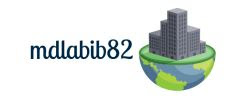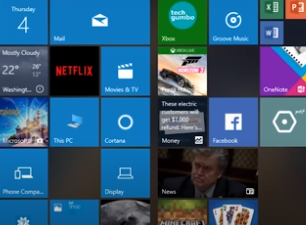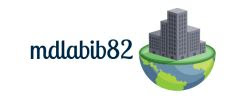I apologize for the confusion. While I don't have access to the specific details of future versions of Windows beyond my knowledge cutoff in September 2021 I can provide you with some general tips that are commonly applicable to various versions of Windows. These tips may help you optimize your computer usage and enhance your experience:
Computer Windows Installing Update:
1. Keep your operating system up to date: Regularly installing the latest Windows updates ensures that your computer has the latest security patches bug fixes and feature improvements.
2. Use antivirus software: Install a reliable antivirus program and keep it updated to protect your computer from malware and other security threats.
3. Practice good password hygiene: Use strong unique passwords for your user accounts and enable multi factor authentication whenever possible to enhance your computer's security.
4. Back up your important data: Regularly back up your files to an external hard drive cloud storage or a separate device to prevent data loss in case of hardware failure or other issues.
5. Organize your files and folders: Create a logical folder structure to keep your files organized and make them easier to find. Consider using descriptive filenames and utilizing file metadata for efficient searching.
6. Optimize startup programs: Review the programs that launch automatically when you start your computer and disable any unnecessary ones to improve startup speed.
7. Clean up disk space: Use the built-in Disk Cleanup tool or other third party disk cleaning utilities to remove temporary files unnecessary system files and other clutter that may be taking up space on your hard drive.
8. Customize your desktop: Personalize your desktop by choosing a wallpaper adjusting screen resolution and color settings and organizing desktop icons for quick access.
9. Explore keyboard shortcuts: Learn and utilize keyboard shortcuts for common tasks to increase your productivity and reduce reliance on the mouse.
10. Explore accessibility features: Windows offers a range of accessibility features to assist users with visual hearing or mobility impairments. Familiarize yourself with these features to make your computer more accessible and user friendly.
Remember that these tips are general in nature and may not specifically apply to any hypothetical version of Windows released after September 2021. It's always recommended to refer to official documentation or resources specific to the version of Windows you are using for the most accurate and up to date information.
Protecting your computer involves implementing a combination of hardware and software measures to ensure its security. Here are some essential steps to protect your computer:
Computer Antivirus Other Program:
1. Use Reliable Antivirus Software: Install reputable antivirus software and keep it up to date. Regularly scan your computer for viruses malware and other malicious programs.
2. Keep Your Operating System Updated: Enable automatic updates for your operating system (e g Windows macOS Linux) to ensure you have the latest security patches. These updates address vulnerabilities that could be exploited by attackers.
3. Use a Firewall: Enable the built-in firewall or install a reputable third-party firewall software. Firewalls monitor and control network traffic blocking unauthorized access to your computer.
4. Enable Automatic Software Updates: Keep all your installed software including web browsers plugins and other applications up to date. Enable automatic updates whenever possible or manually update them regularly. Outdated software can have security vulnerabilities that attackers can exploit.
5. Strong and Unique Passwords: Use strong, complex passwords for all your accounts. Avoid using easily guessable information and consider using a password manager to securely store and generate unique passwords for each account.
6. Enable Two Factor Authentication (2FA): Enable 2FA whenever possible especially for sensitive accounts like email online banking and social media. 2FA provides an extra layer of security by requiring a second verification step such as a code sent to your mobile device in addition to your password.
7. Be Cautious of Phishing Attacks: Be vigilant about emails messages or websites that attempt to trick you into revealing sensitive information.
8. Secure Your Wi-Fi Network: Set a strong password for your Wi Fi network to prevent unauthorized access. Enable WPA2 or WPA3 encryption for your wireless network which provides better security than older protocols.
9. Regular Data Backup: Regularly back up your important files and data to an external hard drive cloud storage or both. This practice ensures you can recover your data in case of hardware failure theft or other incidents.
10. Use a Virtual Private Network (VPN): When using public Wi Fi networks consider using a VPN to encrypt your internet connection. This helps protect your data from potential eavesdropping and enhances your privacy.
11. Exercise Caution When Downloading and Installing: Only download software apps and files from trusted sources. Be cautious during the installation process and carefully review the permissions and access requested by the software.
12. Be Wary of Social Engineering Attacks: Be skeptical of unsolicited phone calls messages or emails that ask for personal information or request urgent action. Verify the legitimacy of the communication independently before providing any sensitive details.
13. Secure Physical Access: Protect your computer physically by locking your doors and using a password or fingerprint authentication to log in. If you're using a laptop keep it with you or store it in a secure place when not in use. By implementing these measures you can significantly enhance the security of your computer and reduce the risk of unauthorized access data breaches and malware infections.
To protect your computer from physical damage, you can follow these guidelines:
Computer High Quality power:
1. Use a sturdy computer case: Make sure your computer is housed in a high quality well built case that provides adequate protection against impact and environmental hazards.
2. Keep liquids away: Avoid placing drinks or any other liquids near your computer. Accidental spills can cause severe damage to the internal components.
3. Protect against power surges: Use a surge protector or an uninterruptible power supply (UPS) to safeguard your computer from sudden voltage spikes and power outages. This will help prevent damage due to electrical fluctuations.
4. Avoid extreme temperatures: Keep your computer in a cool and well ventilated environment. Avoid exposing it to direct sunlight extreme heat or cold as it can lead to overheating or condensation issues.
5. Secure your computer during transport: If you need to move your computer ensure it is properly secured. Use a padded laptop bag or a sturdy box with appropriate cushioning when transporting your computer.
6. Handle with care: When handling your computer be gentle and cautious. Avoid dropping it or subjecting it to unnecessary jolts or impacts.
7. Clean regularly: Dust and debris can accumulate inside your computer, potentially causing overheating and other issues. Clean your computer regularly using compressed air or appropriate tools to remove the dust from the vents and internal components.
8. Secure cables: Arrange and secure cables properly to prevent accidental tripping or yanking which could damage connectors or the ports on your computer.
9. Use a laptop bag or sleeve: If you have a laptop, invest in a well padded laptop bag or sleeve to protect it from scratches impacts and other physical damage while carrying it around.
10. Backup your data: Regularly back up your important files and data to an external hard drive or cloud storage. In case of physical damage you can still retrieve your important data.
Remember while these precautions can help protect your computer from physical damage accidents can still happen. It's important to take preventive measures and also have appropriate insurance coverage for your computer equipment.






